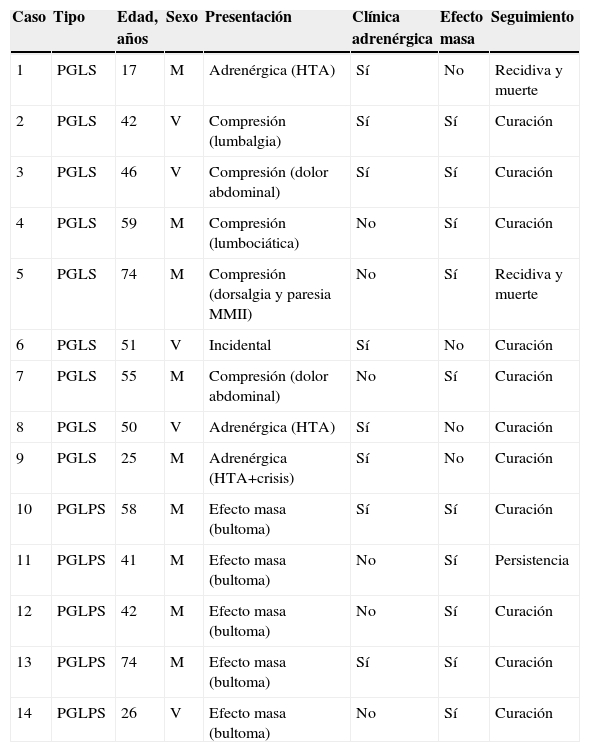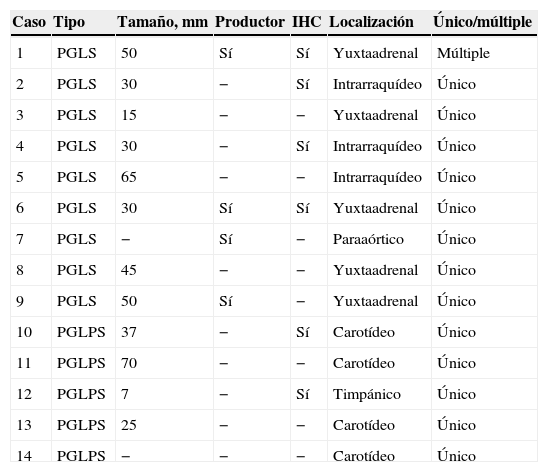Estudio descriptivo retrospectivo de 14 pacientes con un diagnóstico histológico de paraganglioma (PGL) recogidos en el Hospital Universitario de Vigo, Pontevedra, durante los últimos 25 años. Hemos analizado las características clínicas y la evolución de esta serie de enfermos.
ResultadosLa forma de presentación de los 14 pacientes fue por efecto masa en 10, clínica adrenérgica en 3 e incidental en uno. Algunos enfermos con PGL simpáticos (PGLS) (6/9) y PGL parasimpáticos (PGLPS) (2/5) presentaron clínica de hiperproducción adrenérgica antes del diagnóstico. La determinación de catecolaminas urinarias fue positiva en los 4 enfermos con PGLPS en quienes se determinó. El tamaño tumoral medio fue de 37,8±18,9mm, sin diferencias entre los PGLS y los PGLPS. Dos PGLS fueron malignos. La evolución resultó favorable en 11 pacientes, 2 pacientes con PGLS fallecieron y el tumor de un paciente con PGLPS intracraneal no se pudo extirpar en su totalidad.
ConclusionesLos PGL se presentan con frecuencia clínica adrenérgica secundaria a la producción de catecolaminas. Las características de estos tumores aconsejan un estudio detallado en un ámbito especializado antes de la cirugía.
Descriptive retrospective study of 14 patients with paragangliomas (PGL) attended in the University Hospital of Vigo (Pontevedra) during the last 25 years to evaluating their characteristics and neuroendocrine potential.
Results71.4% were diagnosed due to mass tumoral effect, 21.4% due to adrenergic symptoms and 7.1% incidentally. Regarding to symptoms and signs 66.7% of PGL Simpatic (PGLS) and 40% of PGL Parasimpatic (PGLPS) presented adrenergic symptoms. Urine catecholamine analysis was carried out to 4 PGLS and high levels were found in all patients. The tumoral size reached a mean value of 37.8±18.9mm, there were not differences found between both types of tumors. Inmunohistoquimia showed positive Chromogranine A stain in all patients. Two PGLS were maligns. Eleven patients had positive outcome, 2 PGLS died, and 1 PGLPS remains not cured.
ConclusionsHigh percentage of patients had clinical manifestations related to catecholamine hyperproduction. We believe that due to the risk related to surgical treatment, malignance, multiple location and family associations, it would be advisable to carry out a complete examination prior to surgery.
Artículo
Diríjase desde aquí a la web de la >>>FESEMI<<< e inicie sesión mediante el formulario que se encuentra en la barra superior, pulsando sobre el candado.

Una vez autentificado, en la misma web de FESEMI, en el menú superior, elija la opción deseada.

>>>FESEMI<<<








